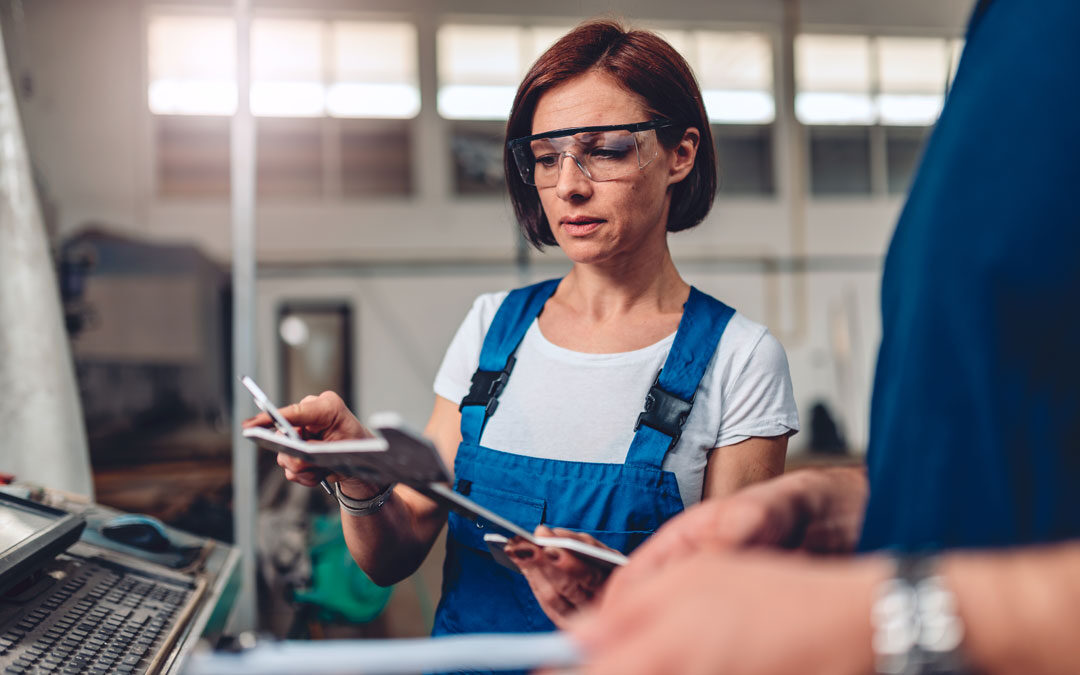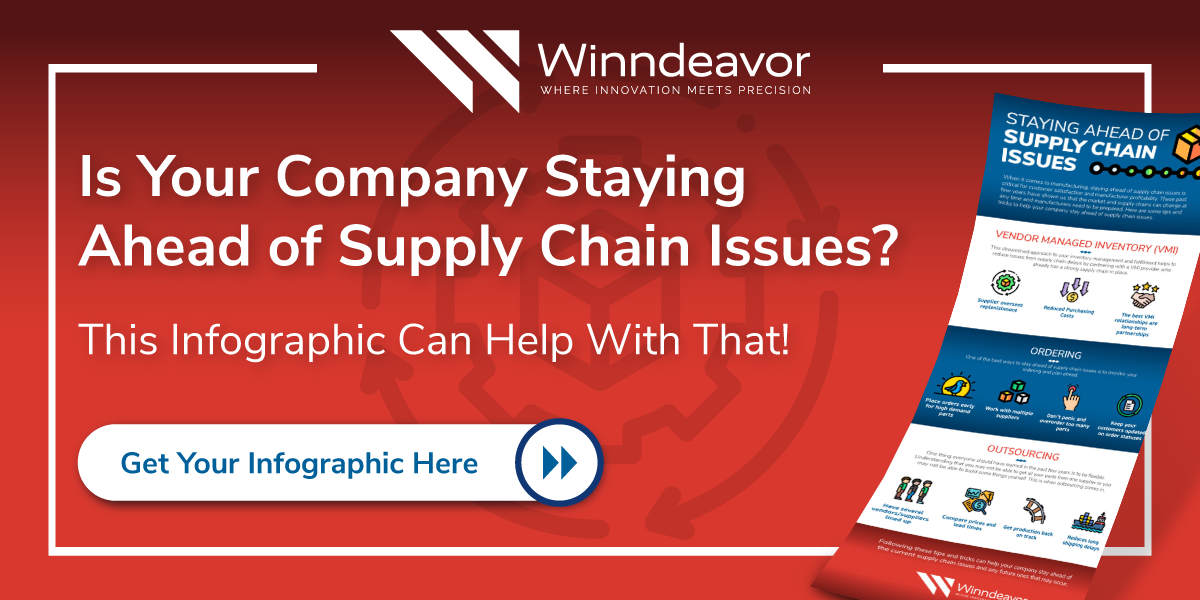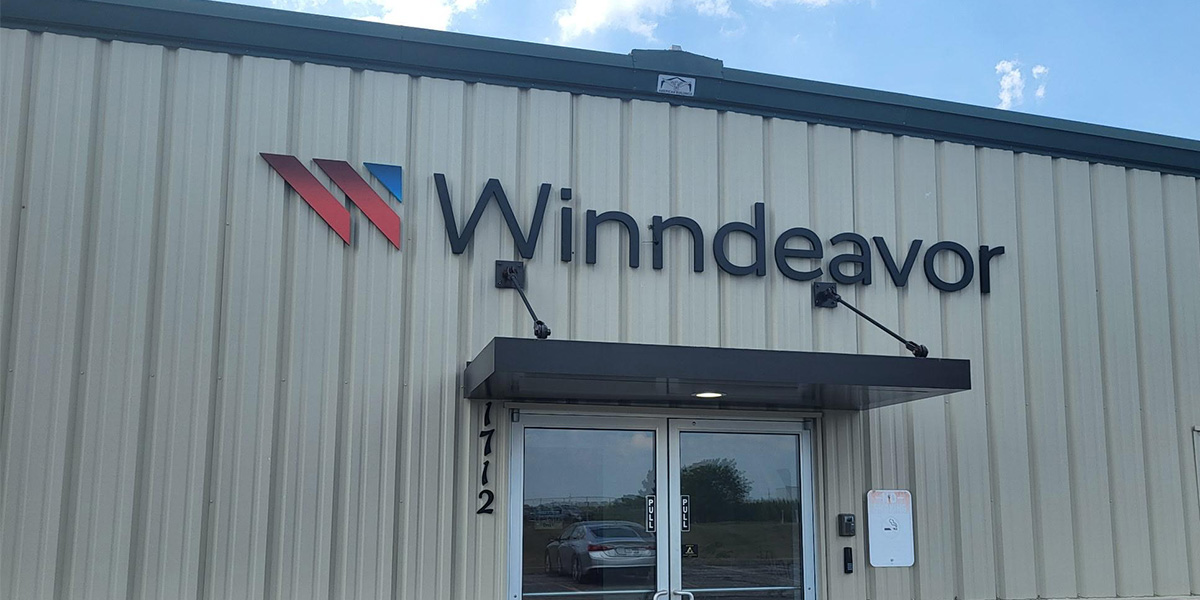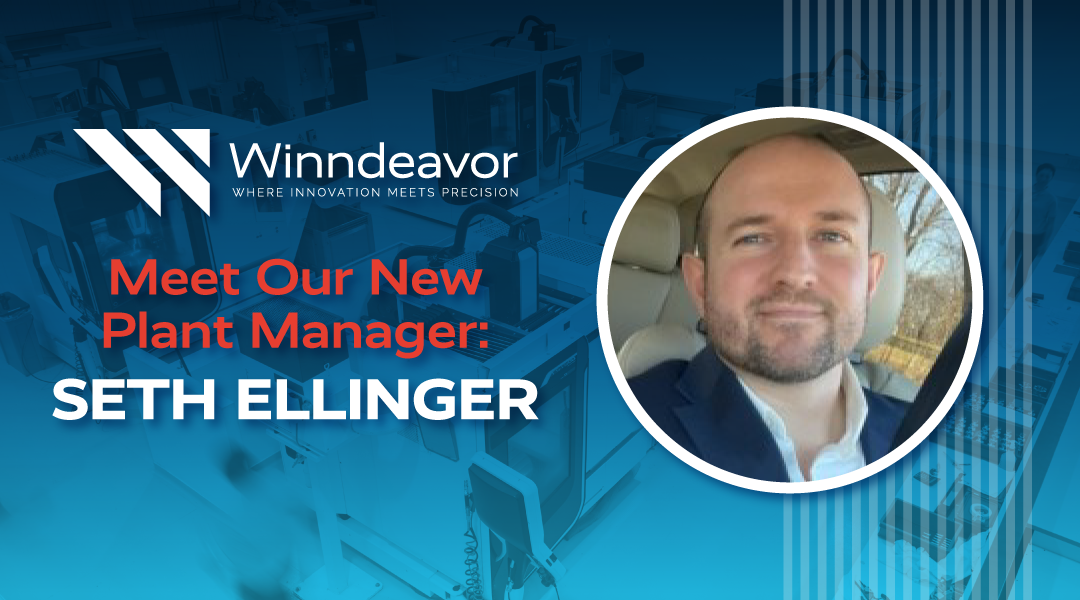Women play an important role in today’s world of manufacturing. While in decades past, shop floors may have been dominated by their male counterparts, today women fill critical positions at every level of the manufacturing organizational chart. At Winn, we are fortunate to have several creative, intelligent women on our team who bring their ability and expertise to the table everyday — helping to make us a strong, successful organization.
We recently had a chance to sit down with the ladies of Winn to talk to them about their experiences in the world of manufacturing and metalworking.
Learn the Ins and Outs of 5-Axis Machining
Please introduce yourselves.
Emily: My name is Emily Finchum. I am a machine operator at Winn and I’ve been here for about seven months.
Stephanie: I am Stephanie Zeno. I have been at Winn for eleven years and I work in the front office.
Dina: I’m Dina Gasaway, one of the owners here at Winn. I’ve been in machining and manufacturing for over thirty years.
How did you get started with Winn?
Stephanie: I actually began working at Winn through a cooperative education program that was offered at my high school in Michigan City, Indiana.
Dina: I started at Winn as a part-time employee. When I first started, I would clean up around the shop, run machines, deliver parts and purchase supplies. Basically, whatever needed to be done!
Emily: I enjoy running and met Dina while running the marathon at the local Sunflower Festival. She invited me to run with her in the mornings since she usually ran past my house. Conversations eventually turned to what we both did for a living. When I told her that I had recently received my CNC certification she told me that she owned a machine shop and I should come in and check it out. The rest is history — I’ve been here ever since.

Dina started at Winn as a part-time employee and is now a co-owner with over thirty years of machining and manufacturing experience.
What is your average day like at Winn and what are some of the things you’ve learned while working in the world of machining?
Dina: These days I am not in the office everyday — but when I am, I mainly focus on insurance, tax stuff and other things that don’t require daily attention. Over time, I have learned firsthand that if you’re not improving quality and productivity on a daily basis, then you’re actually falling behind because you can bet the competition is. To get ahead as an organization, you really need to be using the best tools and technology.
Emily: The first twenty minutes or so of each day is spent getting the machines turned on and ready to go, followed by first piece inspections. Then, I usually bounce between a couple different machines – I am happiest when I am staying busy. I’m learning how to do set ups now and I’m also learning a lot about programming and general maintenance, which I enjoy. I feel like I have already learned quite a bit from working here — making adjustments on the machines, proper inspection procedures, how metal reacts when machined. But what is most valuable for me, each day I continue to learn about who I am and what I’m capable of.
Stephanie: My average day is spent entering orders, invoicing, reviewing and processing bills, filing, answering phones and working with our customers. Over time I have had to learn the various manufacturing processes — how all of our machines work and how our parts are made.
Tell us about some of the challenges you faced and some of the exciting/interesting things you’ve seen while working here.
Emily: My only challenge so far is simply picking up things that are very heavy. I don’t like to ask for help, so sometimes I have to make a few extra trips to carry parts from one place to another. I’m also notoriously easy to startle. I always have been. So its an ongoing game with some of my co-workers to try to scare me at least one good time throughout the day. Many times its an accident and that makes it even funnier. As far as interesting things go, I think our Star swiss machine is awesome. We are able to turn out some crazy cool parts in a matter of seconds on that thing.
Stephanie: Honestly, I don’t feel that I face any challenges as a woman working at Winn. It’s a great place to work. I do think the parts we make and the machines we use to make them are very interesting. We can make some pretty cool parts.
Dina: In the beginning, some men found it hard to believe I knew about coatings, surface finish, materials or anything related to manufacturing. I could see it on their faces. It made me feel good when I knew they trusted me and would even ask for advice. It’s been astonishing to witness the transformation from manual machining to CNC. It’s amazing to see someone write a program, put tools and material in a machine and Shazam! — there are parts exactly to size, ready to be used by the customer. I remember I once took a picture of our then seven year old son running a machine (safety glasses and work shirt included), standing next to Damon. At the time he was half the size of his Dad. We sent this to our customers to let them know we were making every effort to control costs. “We have even cut the size of our workforce in half” was the picture caption. Our customers loved it.
What advice would you give to other women who are thinking of pursuing a career in manufacturing/machining and what does the future hold for Winn?
Stephanie: Never give up and always push forward. I see Winn continuing to grow and succeed in the future.
Dina: Bring your fresh ideas, hard work, integrity and your intelligence. There is plenty of room for women in manufacturing and there always will be. The future for Winn is really wide open. It can only be limited by limited beliefs and we’re fresh out of those at Winn.
Emily: Go for it! Don’t accept being treated like a “fragile girl” — my team doesn’t treat me that way and it means a lot to me. I’m so grateful to have this opportunity. It’s good to know that at shops like Winn, there is continued growth and opportunities for the younger generations to learn a great skill and trade.





